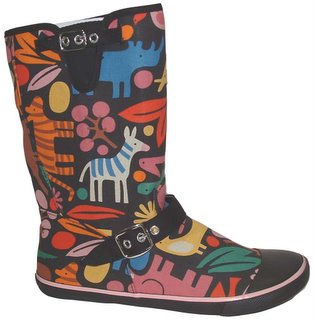Ekphrases, (ekfrasis) also known as Ecphrasis is defined as a plain declaration or interpretation of a thing.
The artwork I chose from the gallery is an American painting done on oil on canvas, it was created in the 1800's, 1870 to be precise. The painting chosen is a 48.9x34.9 cm potrait made ona vertical canvas and it is a representation of everyday life in the post war era. The artist employs the use of a bright palette and free brush work, and clues the observer into his interesting the fleeting effects of light and atmosphere. The freshness of the artists touch comes to life inthe brilliant light and delicate coloration of the painting as a whole.
The focal point in this work of art is solitary female figure. She is a blond haired female garbed in a long, flowy, white frock. The swirl of her dress seems to be imply that there is a lotof breeze blowing at that particular time She has a pair of simple black shoes on and around herhair is a black ribbon, her whole attire is plain and simple which seems to suit that time period.The female figure in the paint has her two feet planted close together on the ground and has herleft arm akimbo on her waist in a somewhat regal pose. She has her back turned away from the observer and this seems to add to the mystery of guessing how young she is, one can only infer that she should be an adolescent. It seems no coincidence that the obsever views this young woman from behind. Though the invitation by her sounding the horn is directed away from theo bserver, it does not imply some sort of exclusion. Her right hand is held towards her face andshe is blowing a long, metal horn, this seems to be the main point that the artist is trying toconvey. She is blowing the horn in order to signify that its time for everyone(probably fieldworkers) to come in.
To the left of the female stands a house that is made of wood it has a small part of its window visible to the observer. Growing across the house is some dried up leaves that seem tobe bean stalks or things of that nature. To the side of the house also lay three broken milk pitchers, these items are relevant because they help the observer infer that this is a farm house.To the distance stands a lone willow tree that leaves are falling from, this puts no doubt in my mind that it is autumn and that will explain the fact that the female's dress in the potrait swirlsto the rhythm of the breeze. The fact that its is autumn is also shown by the brown withered leaves on the ground. The weather does not seem to be in extremes though because the short grass remains lush and green. In the far distance also includes what seems to be a stable forhorses but they are not visible. Also in the potrait is the inclusion of three chickens, two black and one white, and a black cow grazing in the distance.
The artist if the potrait pays great attention to detail with his use of paint. He expresses everything in detail, from the white dress the lone female in the potrait is garbed in, to the greenpigment of the grass and willow trees all come together to bring the painting to life and emphasizes its theme which is the representation of everyday life during the post-war era.
Tifanny's reverse Ekphrase.
Art 101 - Ekphrases
This painting was done in oil paint on canvas in the year 1862.The vertical scene is set up much like a photo studio of today - With a cream/off-white hanging curtain in the background and a dog-skin rug on the splotchy blue and white floor to create a "frame" in which to hold the girl. The dog skin is not of a deep brown (like you would envision a bear skin) but accompanying shades of honey and light browns. The face of the dog is looking directly out at the viewer. The face, muzzle, and mask around the eyes are of a darker brown than the rest of the pelt. If the whole of the pelt is a honey brown, the facial colors would be on the same lines as cinnamon. A small bouquet of purple and white daisies and a bundle of baby’s breath lie at her feet near the head of the pelt.The girl is the central figure in this portrait. The young lady (somewhere probably in her teens) is wearing a period style dress. It is very plain - white with puffy shoulders, white fitted sleeves with gray stripes and fitted white cuffs. The bodice of the dress has textured vertical stripes (off-white) that lead to a white ribbon, with a small bow, as the belt. The rest of the white dress is long and flowing and creates a pool around her feet on the pelt. A gray lace accents the collar of the dress.The girl, herself, is pale - but does not look as pale when compared to all the white she is wearing. Her posture is slightly slumped, perhaps out of boredom. Her look is placid. She is not smiling or frowning. She is merely looking, but not directly at the viewer and at some point off to the left. Her dark brown eyes are large and almond shaped. Her dark brown eyebrows are a bit bushy and match perfectly with her long, slightly unkempt, dark brown hair. Hair that spills over her shoulders and adds contrast to the white gown - the tips of which look to be more of a reddish brown than brown. And in contrast to the entire painting, her full lips are a deep red. In the girl's left hand (so the hand to the right of the viewer) she is limply holding a white lily. It's almost impossible to see unless you pick up on the green stems and leaves which also stick out on all the white.Though the central figure is the girl, not the entire girl seems to be the focus here. The entire portrait appears to be in a light shadow except for a portion that is lighter where the hand holding the lily is. As the portrait flows up from that, it becomes darker - as it flows lower, it becomes darker. But that hand is the first thing that grabs the attention and the stark colors of the girls hair and lips drive the viewer's eyes upward, and the splotchy blue floor drives the viewer's eyes downward.Artistically, the portrait seems smooth from far away. But as the viewer gets closer, the choppy brush strokes become more apparent. The white of the girl’s gown is not achieved by just a single white layer, but with light pinks, grays, whites, blues, and browns all mixed together. This is a common practice of the artist, where the more shadowed the portrait is more mixed and choppy the colors and brush strokes are.

